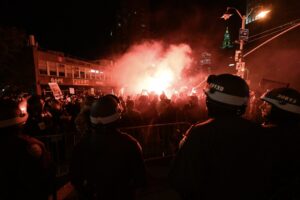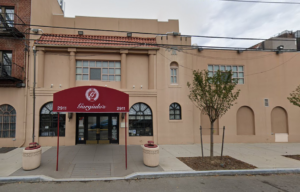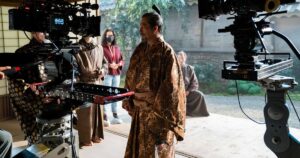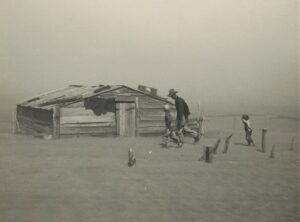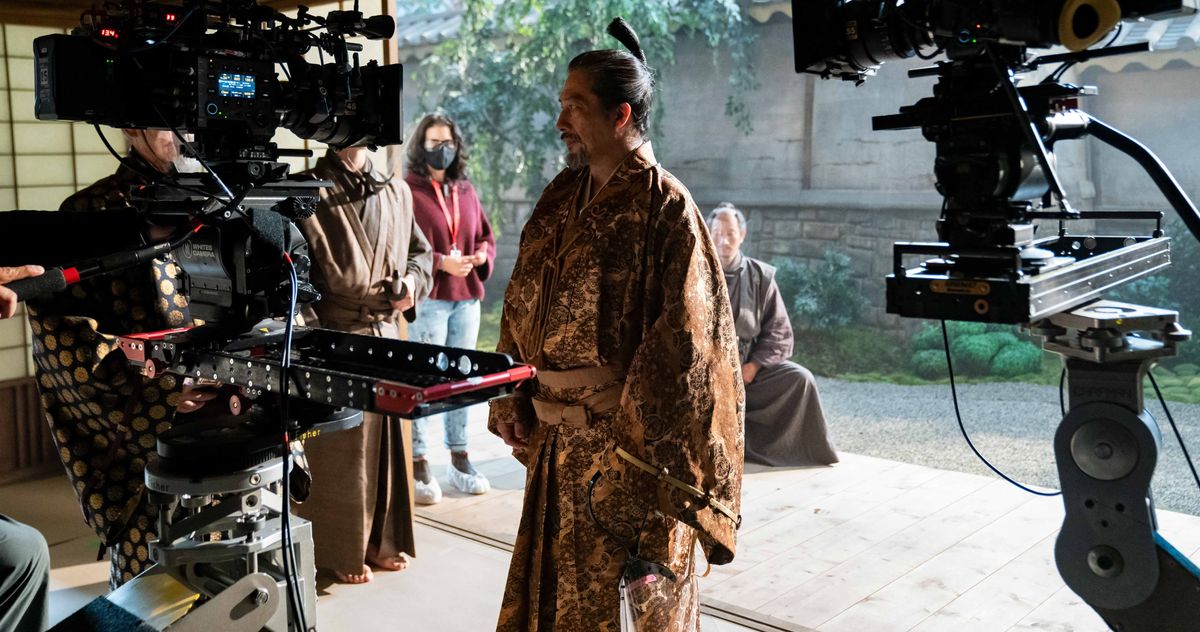

“I always try to be simple in front of a camera. No technique, no calculation.”
Photo: FX
Spoilers follow for Shōgun finale “A Dream of a Dream.”
In the series premiere of Shōgun, Hiroyuki Sanada’s Lord Toranaga, the soon-to-be-exiled regent at the center of the action, is described as “famous for his trickery” by his trusted vassal Lady Mariko (Anna Sawai). Ten hours later, in the last moments of the finale, Sanada sheds the character’s many layers of subtlety and artifice, finally revealing his secret desire to be Japan’s shōgun ruler in the challenge of his gaze, the set of his jaw, and the easy way he wields a katana to dispatch his betrayers. A master of control, Toranaga deftly steers Japan’s various factions — divided among religious and regional lines, and organized behind the country’s Council of Regents — off the path to civil war and into a 260-year era of peace and prosperity known as the Edo period.
These calculations are not dissimilar to Sanada’s role behind the scenes of Shōgun. Six years in the making, including a single day of filming in London in 2019 so FX could retain rights to James Clavell’s novel, the potentially not-so-limited series handed the actor his first official producing credit after years, he says, of unofficial consultant work on Western projects often set in premodern Japan. Sanada ran with the title, encouraging series co-creators Rachel Kondo and Justin Marks to hire crew with expertise in Japanese costuming, set design, hair and makeup, and stunts; painstakingly poring over translations of dialogue with producer Eriko Miyagawa, and ensuring every single episode was cut with an eye toward period-specific accuracy. Shōgun, as a result, centers Sanada’s mammoth performance in front of the camera and also feels indebted to his decades uncredited behind it.
The series cast and crew have spoken at length about your involvement as a producer, popping into scenes to coach actors, give instructions, and maintain Japanese cultural and historical authenticity. When you look back, was there an especially difficult scene that required a lot of work to get right?
Episode four, when Toranaga jumps off the boat and Yabushige’s army is waiting, Toranaga makes a speech, and then Yabushige’s samurai start to cheer Toranaga. It was a complicated scene, and also an important scene — showing Toranaga stealing Yabushige’s army and then leaving for Edo. Toranaga knows it’s dangerous to stay. His strategist face needed to show, and that scene is about Toranaga and Yabushige’s power game.
That was a hard scene. It had so many extras, and such controlled timing. I talked with the director and made the plan of what the extras would say and when. I printed out my plan, and me and the master of gestures, Hannojoh, and the samurai movement adviser, Daiki Ishida, delegated to my team to train the extras: “When I say this, you say this, and at the same time.” [Extends his fist, recreating the chanting gesture from the scene.] We rehearsed and rehearsed during lighting, and we finished on time, before sunset.
Of all of your responsibilities as a producer in pre-production, production, and post-production, was a specific phase your favorite?
I had so much fun on set. I was there all day, even if I had no shooting as an actor. In the early morning, check the set decoration, extras, costumes. Then call the crew and cast, then start rehearsal, then consult on moving, accent, or intonation. Go to my trailer, put my costume on, or the opposite way: costume first, then checking the monitors with the armor on. Sometimes, I’d go between main unit and second unit, checking the monitor in the car.
I wasn’t in episode nine, but every day I was on set, supporting Anna in dialogue, movement, everything. I’m so proud of her. And Yuki Kura, the young actor who played my son Nagakado, or Hiroto Kanai, who played Omi — how they drew their swords or how they said a line, with each detail, I went, “Oh my goodness, yes, that’s it.” Or Moeka Hoshi, who played Fuji — her emotional scenes, her reactions. It was my first experience as a producer, coming to creation from zero. I had that pressure, of course, and those responsibilities, but watching the actors getting better and better was such a happy moment for me.
You’ve said that as a producer, all that preparation allowed you to be more free as an actor. Was there a scene where you felt most free as Toranaga?
The most exciting and tough scene was Hiromatsu’s seppuku. No dialogue, just looking at each other and knowing what the other is thinking. That was challenging, and so dramatic.
In the scene, there are spies everywhere. We have to disguise this perfectly. It was so hard to remember, Don’t cry. But as an actor, it’s hard without the tears. So I tried to show, I’m not crying, I’m angry. [Growls.] More anger was the only way to never cry. It was a tough scene, but it was a very “Toranagi” scene: inside, storm, but outside, calm or anger. That balance was very Toranagi.
I always try to be simple in front of a camera. No technique, no calculation. I feel freedom to just be there as a character, just breathe as a character, and react to others — no more than that. Don’t think about what to do was my stance, and I could be more blank than usual because I prepared everything as a producer. I know Tokuma-san, who played Hiromatsu, so it was easy to communicate. We never talked much; in the morning, “Here comes the day.” “Yeah, let’s do it.” We were just eye to eye.
When I spoke to Tokuma-san, he said when he was told about the scene, Toranaga and Hiromatsu were compared to Paul Newman and Robert Redford in Butch Cassidy and the Sundance Kid. That detail really adds a richness to understanding the connection between your characters.
Tokuma-san said he took this role just for that scene. The very first day he arrived in Vancouver, we were in rehearsal and the camera test and he came directly from the airport to the studio: “Hiro, let’s talk about that scene. I have a plan.”
Tokuma-san, Justin, and I had a meeting about how we could make this scene better and focus on Hiromatsu. It was a little different at the beginning; there were other samurai who commit seppuku, but that’s not too dramatic. It must be only Hiromatsu — that’s more sad, more meaningful. So we recreated the scene, and on the day we were shooting, we were both ready, like horses at the gate. “Let me out now!”
Sanada in episode eight, “The Abyss of Life.”
Photo: Copyright 2024, FX. All Rights Reserved.
Were there any other scenes that changed like that?
We changed a lot from episode six to eight. Rachel had a lot of great ideas for the ladies and put those ideas in six, seven, and eight — more detail to explain their emotion and their position in that period. That’s the most important part of this season, featuring the women characters.
The other actors I’ve talked to mentioned they filmed scenes that didn’t make the final cut. Were there any scenes you were sad to let go of?
I have nothing. I know the meaning of “edit” — the scissor is the final weapon for direction and very important. Sometimes what they didn’t use makes the drama better. It leaves space for the audience to color.
The translation scenes between you, Cosmo, and Anna are really well-choreographed. I saw an interview with Anna where she talked about how, as a gesture of respect, Lady Mariko wouldn’t look at Toranaga’s eyes and would instead look at your throat. What were some of the gestures that were important in those scenes?
Every single movement is important: how to sit, how to stand up, how to walk, how to open the shutter screen, how to pour the sake. How to stand — not like that [slumps downward], but like this [puffs his chest forward]. Show the beauty of the kimono, show the hakama pants at the best angle and move your hips back [stands up, pushes his hips backward]. Everything had to be controlled. Especially for the fighting: How to grip, how to hold, how to move, how to place your footsteps, how to position your head. We had a bootcamp for the young actors and the extras, hundreds of extras, every day for more than four weeks. The girls had to learn the lady-in-waiting movement, how to serve the food, how to serve tea. The guys had to learn how to wear the kimono, sword fighting, archery, long spear, marching correctly. They did a great job, the extras. All the Japanese living in Vancouver, their effort was so great — even in the downpour, all-night shooting, battle scenes. They never gave up.
Do you think that level of authenticity helped the other actors, to know that much about what they’re doing physically?
Yeah. Once they learned how to move or how to pronounce, they’re free, and it’s up to them as actors. And we’re checking. If they make a mistake, we never just say, “okay.” The teachers and coaches are on set and I’m watching the monitor. That’s why they can relax — if you make a mistake and no one corrects you, that means you have to be perfect. But we are all watching, so after you learn, you go into your character and into the world.
That’s interesting — you have more freedom if you know someone is there to correct you.
Yes. That never happened for me on set in these 20 years. That’s why now, it’s easy to focus on my performance. If I make a mistake, they can check. And also, as a producer, I have a scissor as well. [Laughs.]
What were your responsibilities in post-production?
We spent a year and a half in post-production. I went to the studio and watched the first cut. I wrote notes and sent my thoughts to the editors and Justin: “This is incorrect, we cannot use this,” or “This scene needs CGI” or “We cannot show this part; trim, please.” They re-edited, and then check, check, check. ADR was next. We hired Japanese voice actors in L.A. who did all the dialogue for the background extras, and we created the lines. We tried three people for each line of dialogue, then I texted the editor: “Second person, take three. This dialogue, third person, take seven.” After that, we had a Zoom between Tokyo and L.A. where we checked all their dialogue, intonation, and emotion for Japanese classic dialogue. Luckily, we finished all the ADR just before the start of the strike. [Laughs.] After that, we started a VFX check. How far was Osaka Castle from the harbor? Or, this area doesn’t have that kind of tall temple, that’s not history. Or, the roof color looks a little modern. Finally, checking publicity, all the characters’ photoshoots. Sometimes there was too much Photoshop makeup for the geisha girls. Or, “This photo is flipped, please don’t do that,” because the swords are on the wrong side and the kimono is going a different way. Usually the left side of the kimono is on top, and if the right side is, that’s for a dead body at a funeral. It’s the culture of things, so even in design, “please do not flip.” That’s the rule. And then all the video clips, the subtitles for promotion, check, check, check. Everything has to be correct.
What do you think was the most authentic part of the series from a Japanese perspective that would be surprising for Western audiences?
The Noh theater scene in episode six. We invited real Noh theater performers to Vancouver. We created the Noh theater set in Osaka Castle, and the real Noh theater company created the original show that Lord Ishido produces using Ochiba and Taiko’s characters. All the traditional costumes were hundreds of years old and brought to Vancouver, and professional Noh actors played the characters. It was a luxury.
How long did it take for them to write the show within the show?
Less than a month. The actors from the Noh theater were in Vancouver for a week, doing rehearsal and checking the set — the trees’ height, the background, the floor, where the instrument player sits. We spent two days shooting that scene.
You’ve described yourself as a bridge between the East and the West. As that bridge, was there certain wisdom or advice you gave to the younger actors?
Shōgun itself is a big, strong bridge, and they felt that day by day, I think. At the end of shooting, all the young actors were saying, “I want to work on a Western project,” had started learning English already, and tried to talk to the crew in English. They were learning one sentence a day. I’m so happy about that. I want to keep creating this bridge, stronger, longer, wider, and introduce the world to our culture and bring Japanese talent and crew. I believe the door is going to be wide open, more so than 20 years ago.
What has surprised you most about how people have reacted to the show?
Rotten Tomatoes, 100 percent. [Laughs.] Now 99 percent, because of somebody. I’d never heard about that. That was the first big surprise. And the Japanese reaction was so good. Some people were saying, “We were waiting for this kind of jidaigeki historical drama,” because it’s hard to make historical dramas this well in Japan. They are trying to get the young audience, and they make it modernized, Westernized, and don’t use classical Japanese ways. Real fans of jidaigeki said, “We were waiting. Thank you, Hollywood.”
Was there any discussion of a second season?
We discussed that during shooting. We finished the novel in season one, so no more novel. But we have history, real history, and we know what happened. Tokugawa Ieyasu created the peaceful era for 260 years. Who knows what’s going to happen after we release the finale. Let’s see.
This interview has been edited and condensed for clarity.
A team of gesture experts worked on Shōgun to ensure that members of the sprawling ensemble moved in alignment with Japan’s theatrical customs and social norms for the time period, especially for each character’s gender, class, and role. The team also included technical supervisor Toru Harada and period movement advisor Akiko Kobayashi.
Kazufusa Hosho, the 20th grand master of Japan’s Hōshō School specializing in Noh theater, helped craft the show-within-a-show performance in episode six. He read the script and then composed and created the Noh performance that is held in Osaka Castle at Lord Ishido’s request.
The Japanese term jidaigeki refers to period-piece dramas that are set in the country before 1868’s Meiji Restoration, which ended the Shogunate period.


